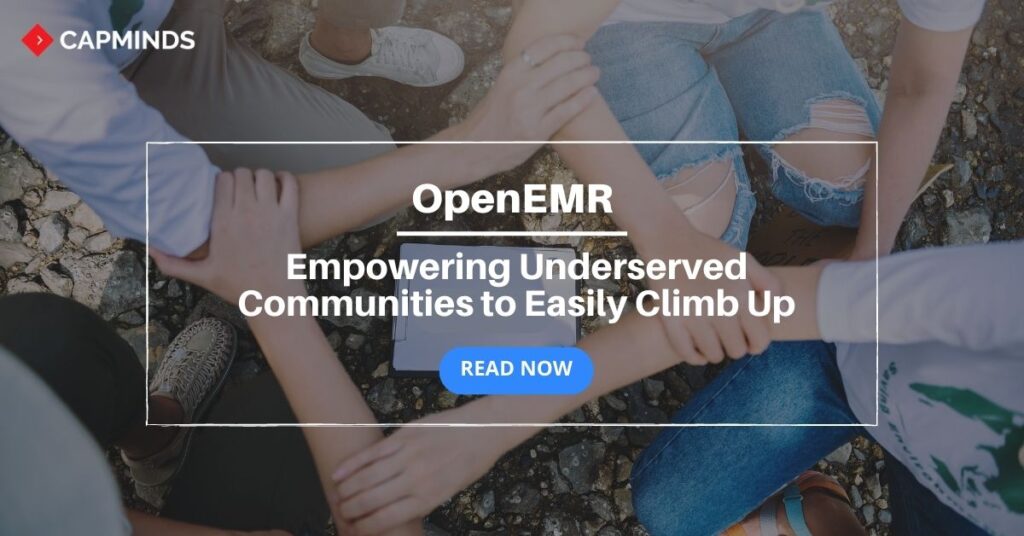Empowering Underserved Communities with OpenEMR to Easily Climb Up
Rural health centers play a vital role in providing essential medical services to remote and underserved communities. And we know that each second in healthcare matters!
However, these centers often face unique challenges due to limited resources, infrastructure, and geographic isolation. To overcome these hurdles and improve healthcare access, many rural health centers have turned to technology solutions like OpenEMR – an open-source electronic health records (EHR) system designed to meet the specific needs of healthcare providers in all settings.
RELATED: An Ultimate Guide to Behavioral Health OpenEMR 2023
In this blog, we will explore the significance of OpenEMR for rural health centers, its key features, and real-life use cases that highlight its impact on healthcare delivery in underserved areas.
The Significance of OpenEMR for Rural Health Centers
1. Affordable and Open-Source
- One of the primary advantages of OpenEMR for rural health centers is its affordability and open-source nature
- With limited budgets, rural centers can avoid hefty licensing fees and opt for this cost-effective EHR solution, allowing them to allocate resources to other critical areas of healthcare
2. Customizable Workflows
- OpenEMR’s flexibility allows rural health centers to tailor the EHR to match their specific workflows and documentation requirements
- This customization ensures seamless integration with existing practices, reducing disruption during the implementation process
3. Data Security and Privacy
- Rural health centers deal with sensitive patient data, making data security and privacy paramount
- OpenEMR provides robust security features, including encryption, access controls, and regular updates, ensuring patient information remains confidential and protected from potential breaches
4. Interoperability
- Collaborating with external healthcare providers and agencies is common for rural health centers
- OpenEMR’s interoperability standards like HL7 and FHIR, enable seamless data exchange, enhancing coordination and continuity of care
Key Features of OpenEMR for Rural Health Centers
1. Offline Capabilities
- To address connectivity challenges in remote areas, OpenEMR offers offline functionalities
- Healthcare providers can access patient data and continue recording information even without internet connectivity
- Once online, data synchronization ensures data updates are reflected in the system
2. Telemedicine Integration:
- OpenEMR allows the integration of telemedicine platforms
- This facilitates virtual consultations and extended medical services to patients who may struggle with travel or have limited access to in-person care
3. Patient Portal
- The patient portal feature empowers rural patients to access their medical records, schedule appointments, and communicate with providers remotely
- This fosters patient engagement and active participation in their healthcare journey
4. Customizable Encounter Forms
- OpenEMR’s form editor allows rural health centers to create customized encounter forms
- These are to capture specific data relevant to behavioral health, primary care, and other specialties
Real-Life Use Cases
1. Remote Patient Monitoring in Alaska
In the vast wilderness of Alaska, accessing healthcare services can be challenging for remote communities.
- A rural health center in Alaska implemented OpenEMR’s offline capabilities to address connectivity issues
- Community health workers were equipped with mobile devices, enabling them to access patient records, update vital signs, and perform basic medical assessments in the field
When back in the clinic, the data was synchronized with the EHR, ensuring continuity of care and reducing the need for patients to travel long distances for routine check-ups
2. Telepsychiatry in Appalachia
In Appalachia, access to mental health services is limited. A rural health center in this region integrated a telepsychiatry platform with OpenEMR to bridge the gap in mental health care.
Patients could now participate in virtual counseling sessions with psychiatrists, reducing the stigma associated with mental health and providing timely interventions for behavioral health issues.
3. Disaster Response in Rural Texas
During a natural disaster, rural health centers in Texas faced significant challenges in maintaining medical records and providing care.
One center relied on OpenEMR’s cloud-based hosting to ensure data continuity and accessibility during such emergencies. The EHR’s encryption and security features safeguarded patient information, even amidst chaotic situations.
4. Chronic Disease Management in the Midwest
In the Midwest, a rural health center implemented OpenEMR’s patient portal to empower patients with chronic diseases like diabetes and hypertension.
- Patients could access their lab results, track vital signs, and communicate with their healthcare team from the comfort of their homes
- The patient portal’s educational resource also helped patients better understand their conditions, promoting self-management and healthier lifestyles
5. Mobile Clinics in Sub-Saharan Africa
In rural regions of Sub-Saharan Africa, access to healthcare is often limited due to vast distances and underdeveloped infrastructure.
- To bridge this gap, a nonprofit organization partnered with a rural health center and implemented OpenEMR on mobile clinics
- Healthcare workers traveled to remote villages equipped with portable devices, collecting patient data, and conducting basic medical examinations
- OpenEMR’s offline capabilities allowed them to function seamlessly, and once back at the health center, the data was synced to the main server
This initiative significantly improved healthcare access for underserved communities.
6. Maternal and Child Health in South Asia
RELATED: HL7 FHIR Implementation: Better Standardizing Maternal & Infant Health Data Exchange
A rural health center in South Asia focused on enhancing maternal and child health services.
- OpenEMR’s customizable encounter forms enabled them to create specific forms for prenatal care, postnatal visits, and pediatric assessments
- The EHR’s telemedicine integration was utilized to provide remote prenatal counseling and postnatal follow-up consultations, reducing the need for pregnant women and new mothers to travel long distances for routine care
7. Remote Diabetes Monitoring in Australia
In the remote Outback of Australia, a rural health center employed OpenEMR’s patient portal and telemedicine capabilities to improve diabetes management for indigenous populations.
- Patients could regularly upload their glucose readings and vital signs to the patient portal from home
- The healthcare team remotely monitored the data and conducted virtual consultations as needed
This approach empowered patients to take an active role in their diabetes management and reduced the number of hospital visits.
8. Community-Based Behavioral Health in Latin America
A rural health center in a remote region of Latin America focused on expanding behavioral health services.
- OpenEMR’s form editor was leveraged to create customized encounter forms for psychiatric assessments and treatment plans
- By using the EHR’s offline functionalities, community health workers could conduct home visits and document mental health assessments even without internet connectivity
This initiative greatly improved the identification and support of individuals with behavioral health needs in underserved communities.
Final Thoughts
OpenEMR has proven to be a game-changer for rural health centers, addressing the unique challenges they face and enabling them to deliver high-quality healthcare to underserved communities
Its affordability, flexibility, and robust features have made it an invaluable tool in improving healthcare access, patient outcomes, and provider efficiency in remote areas.
- Real-life use cases from different regions showcase the versatility of OpenEMR in addressing diverse healthcare needs, ranging from remote patient monitoring to chronic disease management and behavioral health support
- By embracing technology and implementing OpenEMR, rural health centers are breaking barriers and expanding access to quality healthcare for those living in the most underserved corners of the world
As technology continues to advance, OpenEMR’s potential for rural health centers will only grow, empowering providers to deliver compassionate care to even the most remote communities. By partnering with EHR solutions like OpenEMR, rural health centers can pave the way for improved health outcomes, reduced health disparities, and healthier futures for the individuals they serve.
OpenEMR Services from CapMinds
CapMinds OpenEMR consigns clinicians with the best features and ways to integrate. It makes their workflows more efficient and filtered. The versatile, flexible, and integrated features will allow them to combine the ability of patient record management with conceptual and concurrent reminders. This enhances the process of decision-making and improves patient care and quality.
- At CapMinds, custom solutions like OpenEMR are developed with much curation and accuracy to match the special practice needs
- It will be low-cost, the perfect budget solution to the typical traditional subscription-based ones for your rural health care’s long future
- CapMinds OpenEMR prioritizes secure data management & ensures compliance with industry regulations, offering healthcare providers peace of mind
- Exclusive: “Clients can own the code and resell it”
Get the best technologies and HIPAA-compliant and efficient OpenEMR that can be customized to fit your practice from CapMinds Technology. Our OpenEMR services facilitate a Modern User Interface (UI), customization, production support & training. Also facilitates billing, report & specialty enhancements, clearing house integrations, e-prescription, cloud, and more.
Wherever you are, whenever it is, tend to your dear patients without any difficulty, with CapMinds!
“Because we know the value of your seconds”




